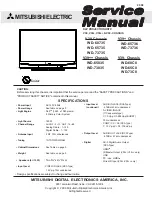
DET-882
SecoGear Medium-voltage Switchgear Application and Technical Guide
SecoGear Switchgear Applications
©2017 General Electric All Rights Reserved
43
DUAL-SOURCE INCOMING LINES (DSIL)
Dual source incoming line equipment (DSIL) is a metalclad
section containing a power circuit breaker acting as a main
disconnect between a main power distribution bus and one
of two sources of power supplying the main bus. The other
source of power may be either another incoming line or a
local generator. Both sources supply a common distribution
bus, with or without a normally closed bus-tie breaker.
Basic Equipment Selection
•
DSIL-1: Use this type of incoming line for an impedance
or solidly grounded system fed from a local wye-
connected power transformer, with a current transformer
in the transformer neutral connection.
This type of incoming line equipment includes three-
phase overcurrent relays (51) and three-directional
phase-overcurrent relays (67). It includes one ground-
over-current relay, (51G) connected to the neutral CT of a
local power transformer feeding the incoming line and
one residually connected directional ground-overcurrent
relay (67N), polarized from the power transformer neutral
CT. These protective functions are available in a single
relay package, such as the GE 850, F650 or F60 relays.
•
DSIL-2: Use this type of incoming line for an impedance
or solidly grounded system fed from a remote wye-
connected power transformer.
This type of incoming line equipment includes three-
phase overcurrent (51) and directional phase-overcurrent
(67). It also includes residual-connected ground-
overcurrent (51G) and residually connected directional
ground-overcurrent (67N) polarized from a wye-broken
delta auxiliary VT connected to a set of wye-wye VTs.
These protective functions are available in a single relay
package, such as the GE 850, F650 or F60 relays.
•
DSIL-3: Use this type of incoming line for ungrounded
systems only.
This type of incoming line equipment includes three
phase-overcurrent (51) and directional phase-overcurrent
relays (67), no ground fault detection. These protective
functions are available in a single relay package, such as
the GE 850, F650 or F60 relays. There are additional
functions available as required.
Optional Equipment Selection
Protection
•
Overcurrent Relay Characteristics: Time-current
characteristics for overcurrent relays are determined by
system studies. After the time-current characteristic has
been established, make sure the relays selected offer the
required time current characteristics that satisfy the
application.
•
OPEN-PHASE PROTECTION: For incoming lines fed from
transformers with fused primaries or sources subject to
single-phase operation, add negative-sequence voltage
protection (60) and timer (62), as well as current-balance
detection (60C), to distinguish which incoming line has
single-phase operation.
•
Transformer and Bus Differential Protection: Add relays
and current transformers to obtain this protection, using
the same considerations as for single source incoming
lines.
•
Directional Power, Underfrequency, and Undervoltage
Protection: Add separate relays or enable these
functions in multifunction relays to obtain this protection
using the same considerations as for single-source
incoming lines.
Indication
•
Instrumentation and Metering: For circuits requiring the
indication or metering of additional electrical quantities,
add indicating analog meters as appropriate or a
multifunction meter such as GE Type EPM 6000. Some
relays also include extensive metering functions such as
Amps, Volts, Watts, Vars, PF, and demand functions (such
as GE 850 &, F650).
•
Test Blocks: For circuits that require provisions for
insertion of portable recording meters or other similar
devices, add a current and voltage test block. Basic test
block is wired to maintain the circuit when the test plug is
removed.
•
Indicating Lamp: Additional indicating lamps can be
provided, such as for circuits requiring a circuit breaker
disagreement or spring-charged indication function.
Control
Optional features involving control voltage and permissive
control switch are the same as for single-source incoming
line equipment.
Location of Optional Devices
If several optional devices are added to incoming line
equipment, there may not be sufficient space to mount them
all. In this case, specify excess relays to be mounted on the
tie breaker vertical section, or on an adjacent auxiliary
compartment.
















































